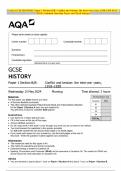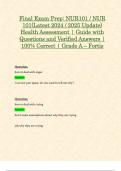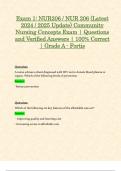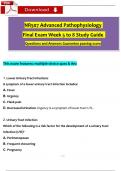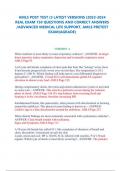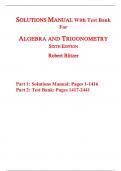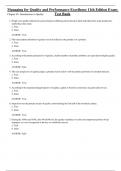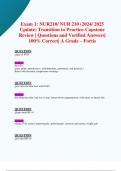Exam (elaborations)
Pearson Edexcel Level 3 GCE Further Mathematics Advanced Subsidiary Further Mathematics options 26: Further Mechanics 2 (Part of option J)
- Module
- Mechanics 2
- Institution
- PEARSON (PEARSON)
Pearson Edexcel Level 3 GCE Further Mathematics Advanced Subsidiary Further Mathematics options 26: Further Mechanics 2 (Part of option J)
[Show more]




